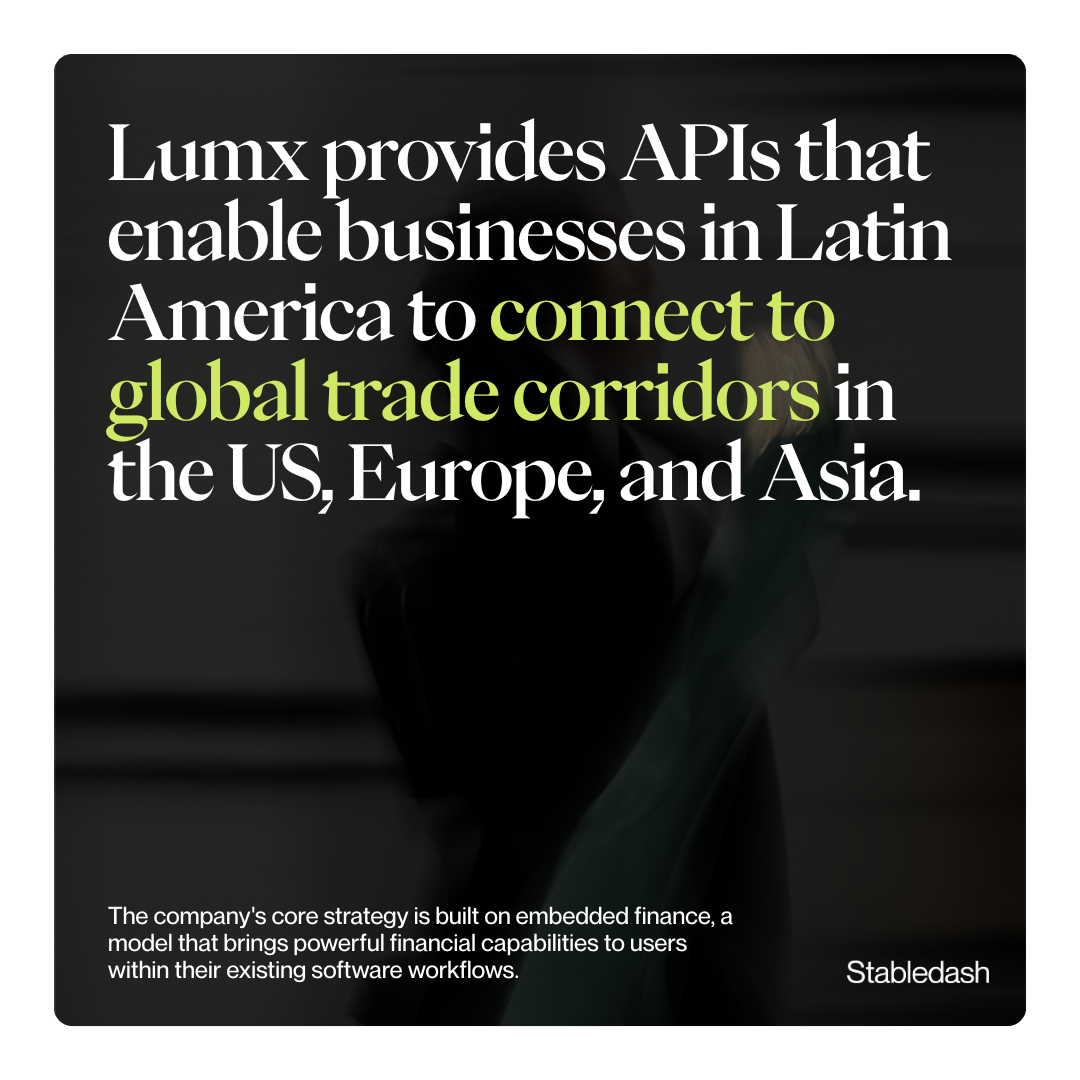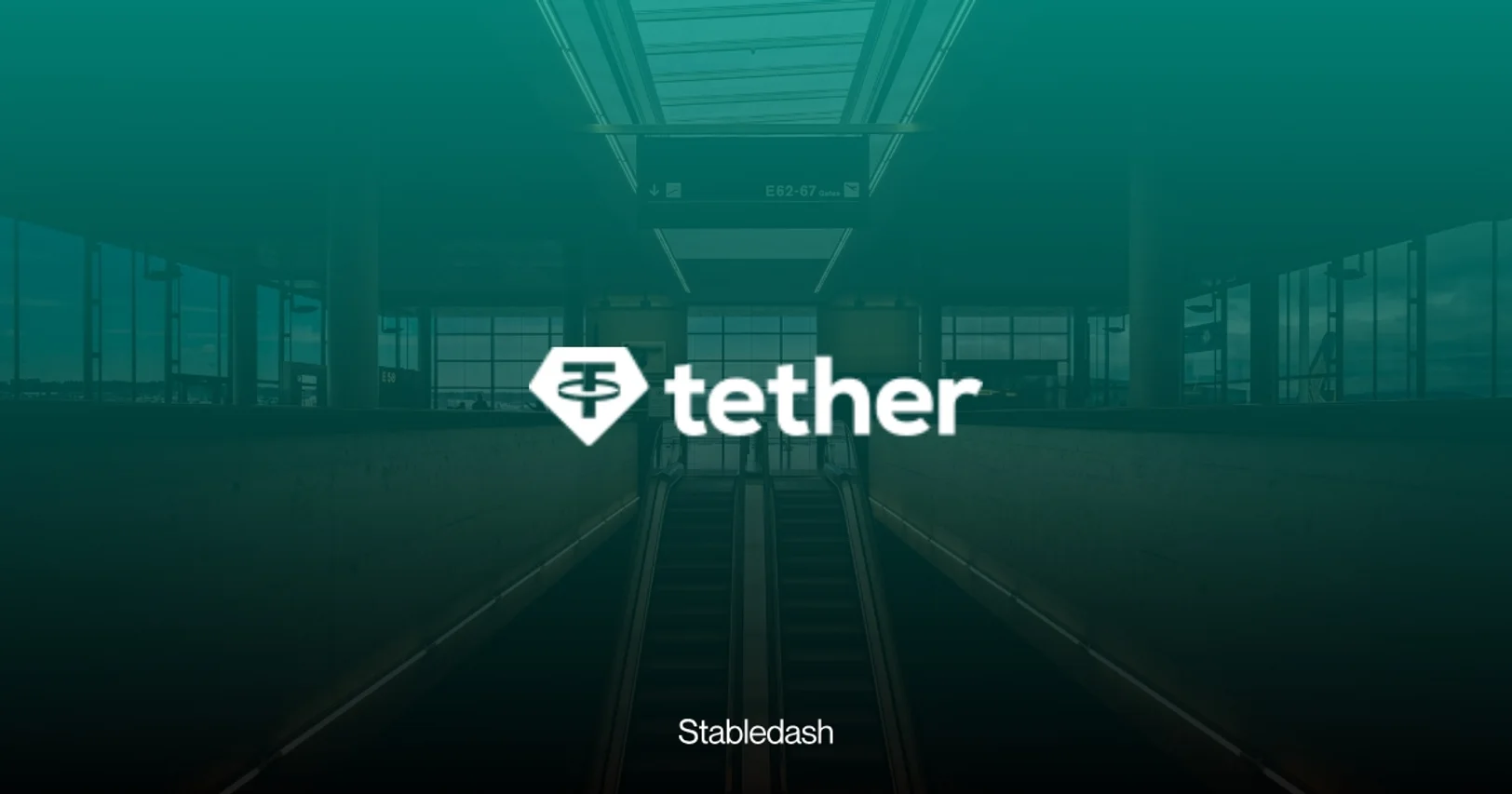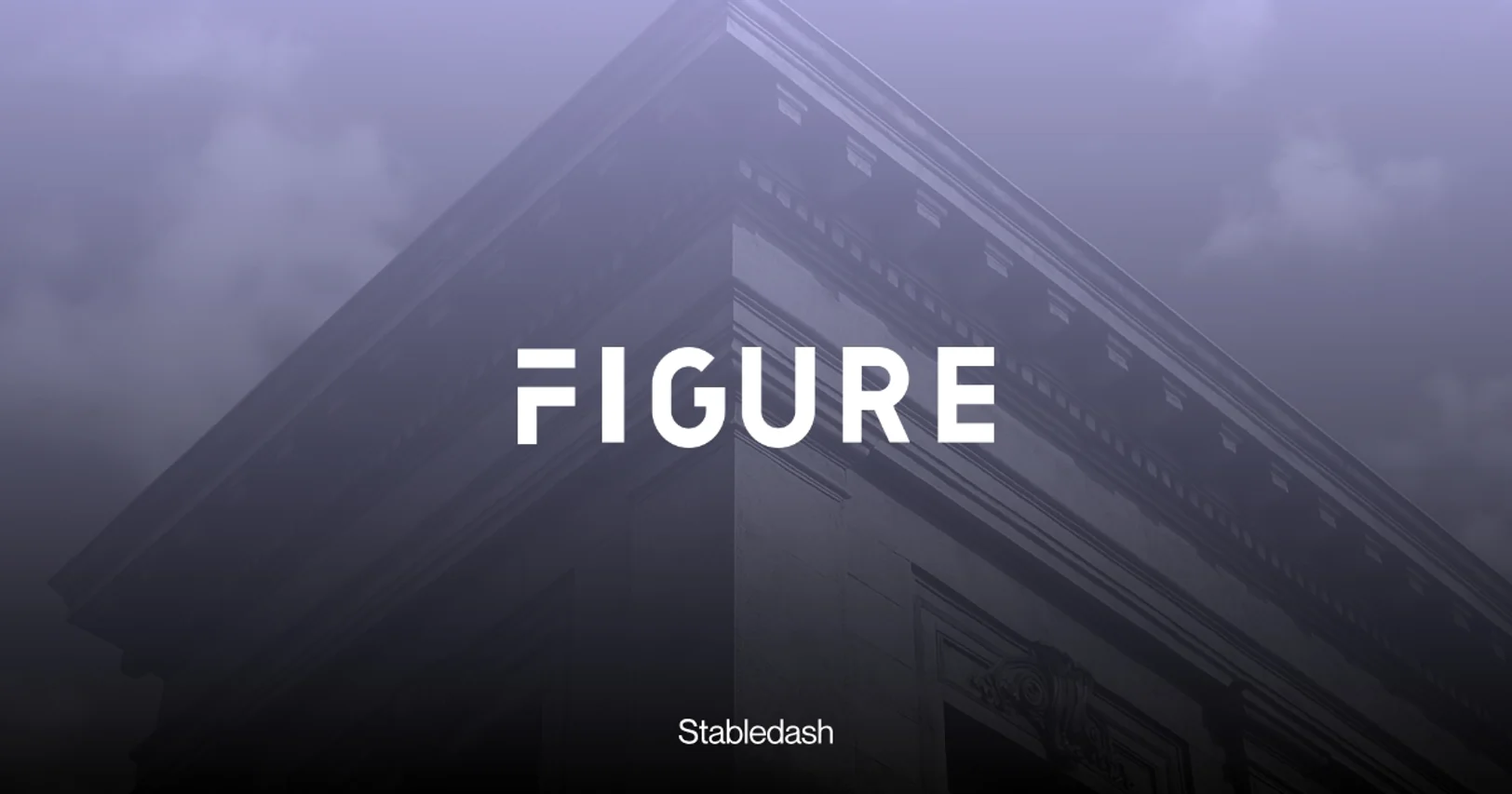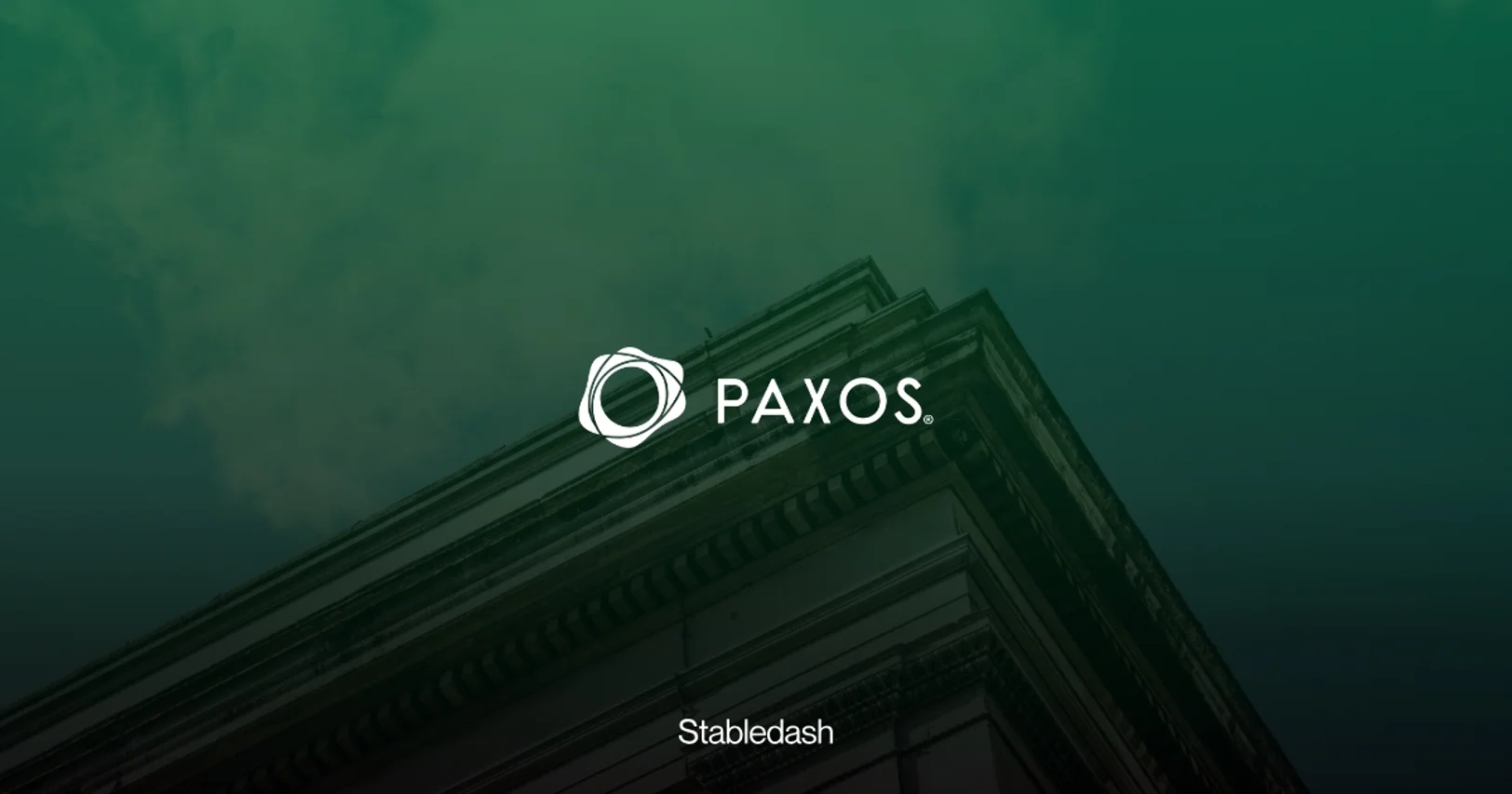Stablecoin Conference LATAM 2025
How Stablecoins Actually Win in Brazil | Lumx | Stablecoin Conference LATAM 2025
Brazil-based fintech Lumx is pioneering a stablecoin-native infrastructure for B2B trade by embedding its financial tools directly into existing SaaS platforms, positioning itself to capture a significant share of Latin America's cross-border payment flows.
October 7, 2025

Companies mentioned:
How Stablecoins Actually Win in Brazil | Lumx | Stablecoin Conference LATAM 2025
A Founder’s Vision for Global Money Movement
For businesses operating in Latin America, moving money across borders is often fraught with friction, delays, and complexity. Caio, the founder and Co-CEO of Brazilian fintech Lumx, is building a solution designed to solve this problem from the inside out. His vision is rooted in creating stablecoin-based money movement infrastructure that integrates seamlessly into the tools global businesses already use.
At the Stablecoin Conference in Mexico City, Caio expressed his passion for building a connected financial ecosystem. "It's very good to be part of the ecosystem, actually to feel part of the ecosystem," he reflected, setting the tone for his company's collaborative and infrastructure-focused approach.

The Breakthrough Embedded Finance Use Case
Lumx’s strategy is best illustrated by a recent, transformative client partnership. The company has integrated its technology with a major Software-as-a-Service (SaaS) platform that manages logistics and supply chains for importers and exporters in Brazil. This platform, which previously had no payment functionality, serves a significant portion of Brazil's massive trade market, which saw a total trade flow of approximately $599.52 billion in 2024.
The client's business customers—the importers and exporters—can now access a full suite of financial tools directly within the management software they use daily. Lumx’s infrastructure provides each business with an embedded stablecoin wallet, foreign exchange (FX) capabilities, and virtual accounts in USD and EUR. This enables a Brazilian exporter, for example, to receive local payments in the US without needing a US bank account, all settled nearly instantly using stablecoins.
This integration turns a logistics tool into a comprehensive cross-border payment and treasury solution. It simplifies a once-cumbersome process of going to a bank for traditional FX, allowing businesses to manage payments within their operational dashboard. "The use case is in a nutshell embedded finance at its finest," Caio notes.
Navigating Brazil’s Unique Financial Rails
Lumx's success is deeply tied to its nuanced understanding of Brazil's advanced domestic financial landscape. The country's instant payment system, PIX, has become a dominant force, fundamentally shaping the opportunities for digital assets.
Launched by Brazil's Central Bank, PIX allows free, 24/7 instant payments for individuals and businesses. Its adoption has been explosive. By March 2025, PIX transaction volumes were 2.5 times that of credit cards, and B2B transactions accounted for 46% of the total value moved on the network. The system is so effective for domestic transfers that Caio believes it makes a local BRL-based stablecoin for payments redundant.

"PIX from my perspective, to be honest, I don't see any negative points on PIX because it just works like for everything," he states. For a global money movement company like Lumx, he adds, "It's everything that we want. It's everything that we need."
The company is also navigating the evolution of Brazil's central bank digital currency (CBDC) project, Drex. Initially envisioned as a public blockchain-based tokenization platform, the central bank recently pivoted its short-term focus toward a more centralized architecture to address privacy and scalability concerns. This shift underscores the volatility of relying on government-led innovation, a lesson Lumx learned early on.
This approach accelerates adoption by meeting businesses where they are. As Kaio explains, his philosophy is clear: "For me, it's so much better to embed financial tools that are stablecoin native within tools that already exist."
Pivoting from Tokenization to Payments Infrastructure
Lumx’s current focus on payments infrastructure is the result of a strategic pivot. The company began its life as a broad tokenization platform, exploring use cases from real estate to carbon credits. Caio humorously recalls the early days, explaining that the core design philosophy has remained consistent. "The same mindset that we had back then when we were tokenizing, I don't know, carbon credits or, you know, fence oaks or pictures of my mom—we have the same philosophy now," he says.
The pivot was a market-driven decision to concentrate on the most immediate and valuable use case: stablecoin-based money movement. The team realized that while the grand vision of tokenizing the entire economy was powerful, the near-term demand was for faster, cheaper cross-border payments. The robust wallet and transaction infrastructure built for tokenization was repurposed and refined, giving Lumx a technologically mature foundation for its new mission. This agility has allowed the company to meet a tangible market need while larger, systemic shifts continue to unfold. That philosophy is centered on user experience. The goal, Kaio explains, is to "make moving money as easy as, I don't know, sending a picture on WhatsApp."

The Road to Regulation and a Seed Round
With a proven model and clear market focus, Lumx is entering a new phase of growth, marked by a proactive regulatory strategy and a new funding round. "Overall, it's exciting times," Caio states. "That couldn't be better timing for us to be part of the ecosystem. Business is doing great."
The company is preparing to acquire two key licenses in Brazil: the Virtual Asset Service Provider (VASP) license and a separate license for stablecoin-based FX. These regulations, expected to be finalized in 2025, will establish clear rules for the industry. Lumx is positioning itself to be one of the first fully regulated digital asset payment providers in the country. "We are not bringing random volumes," Caio emphasizes, highlighting the company's focus on high-compliance, regulated business clients.
Instead of viewing regulation as a hurdle, Caio sees it as a competitive advantage that builds trust and unlocks institutional-level partnerships. With a touch of humor, he admits, "It's funny to say that I'm very anxious and excited to be regulated."
To fund this next chapter, Lumx is closing a seed round. A significant portion of the capital will be used to meet the tiered capital requirements for the VASP license, which can range from BRL 1 million to over BRL 5 million depending on the operational scope. The funding will also accelerate go-to-market efforts and expand Lumx's presence in key jurisdictions. With a clear path forward, Lumx is set to scale its embedded finance solutions beyond Brazil and solidify its role as critical infrastructure for trade across Latin America.
Don't Miss the Next Big Shift
The Stabledash newsletter keeps you off the timeline and dialed into modern money.
Join leaders at Circle, Ripple, and Visa who trust us for their stablecoin insights.



